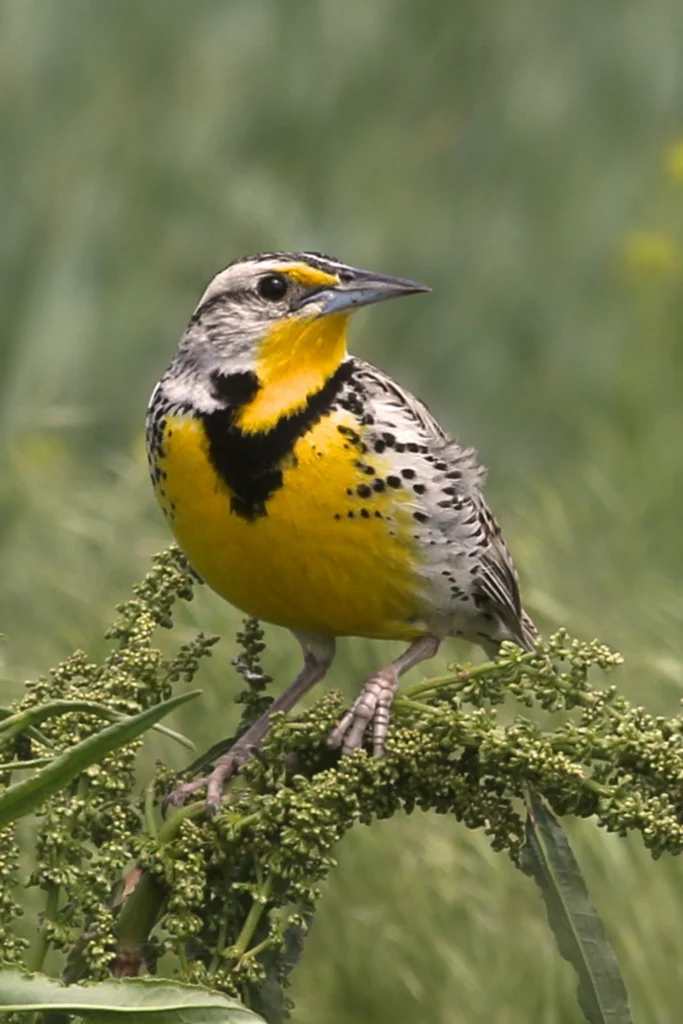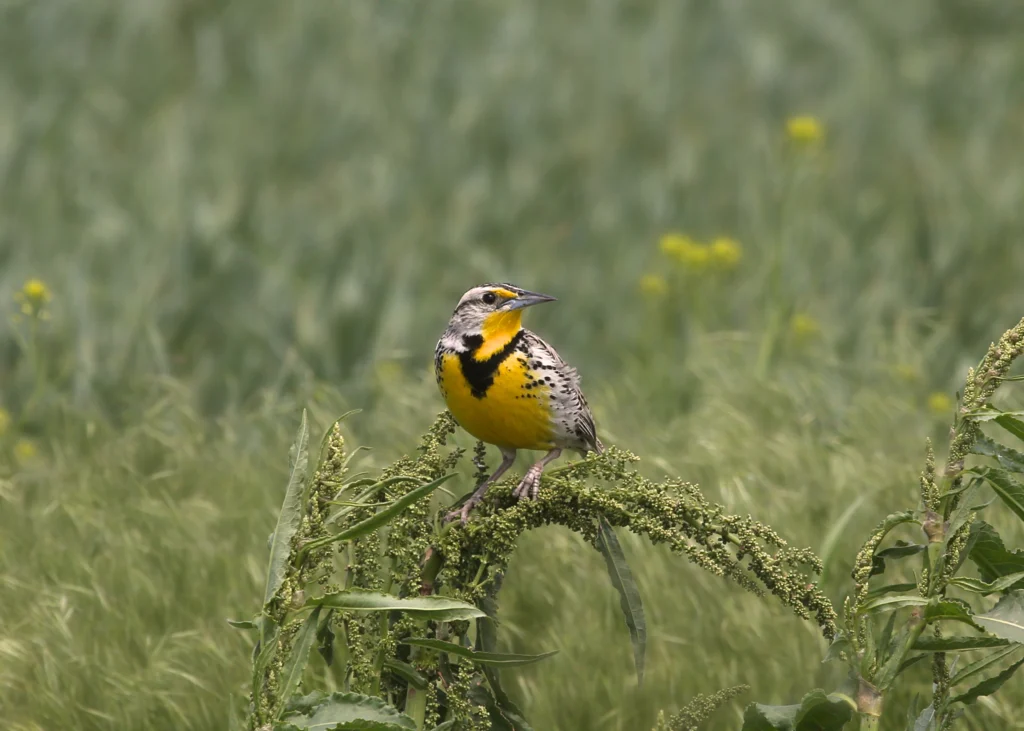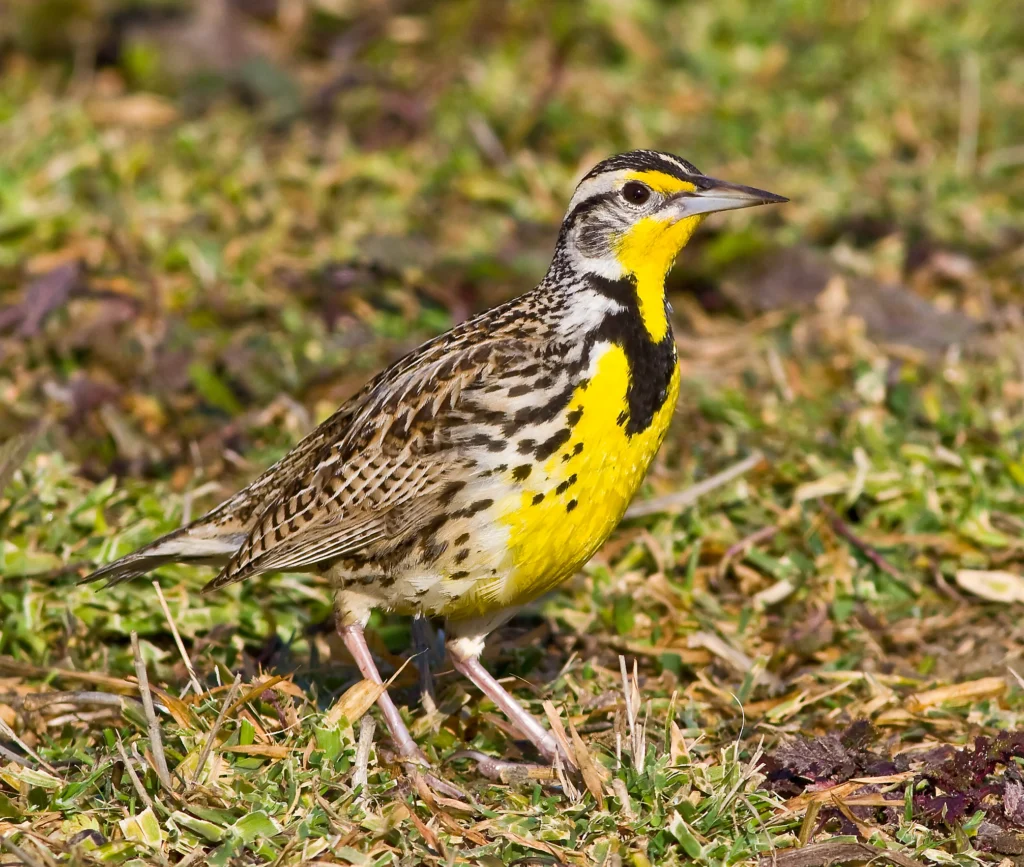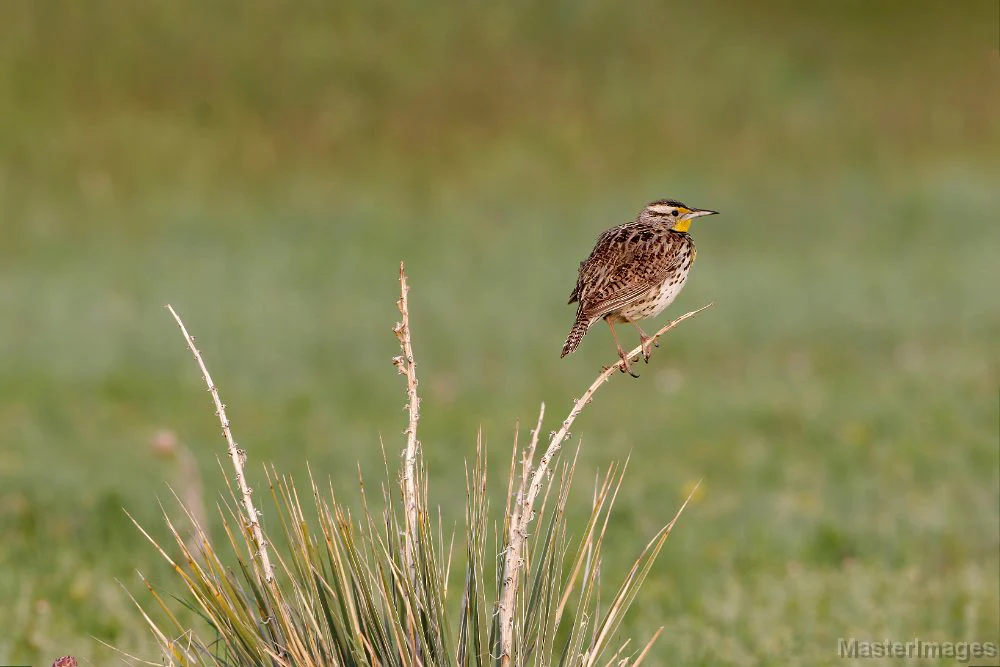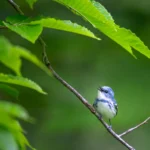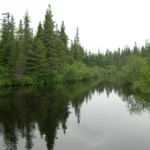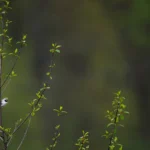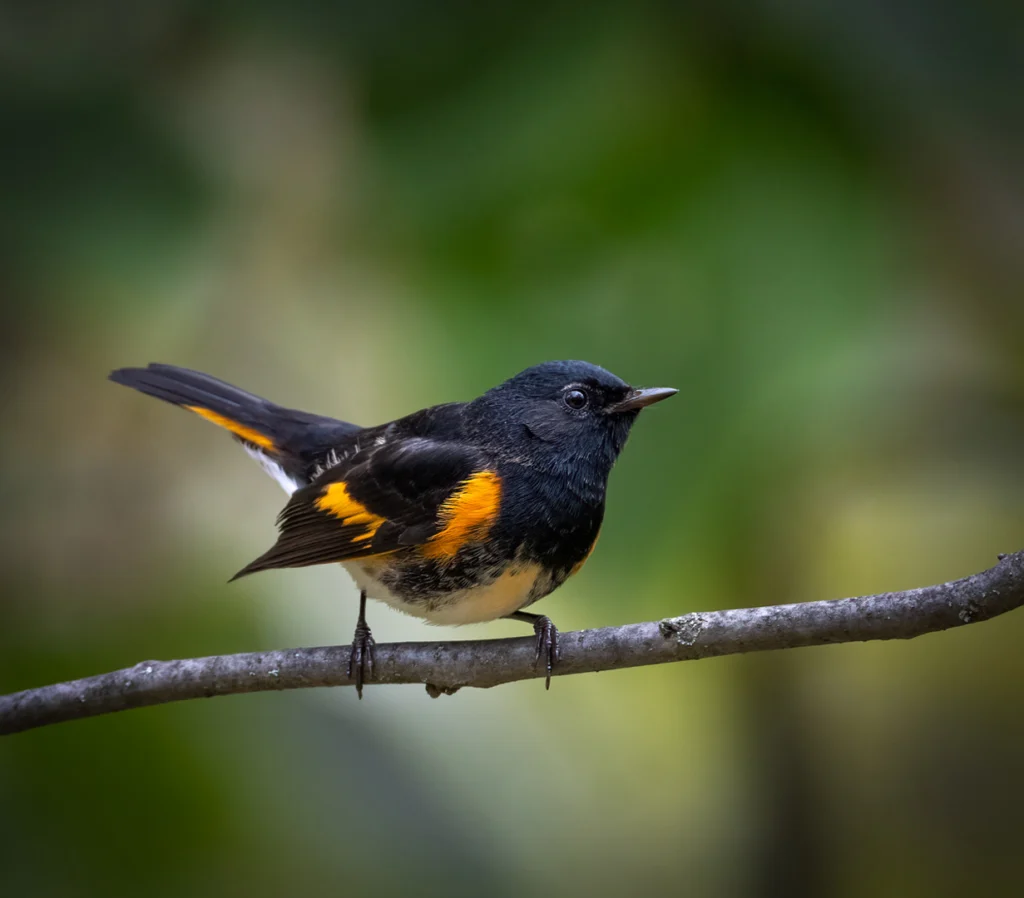
Overview
About
A common and conspicuous bird across much of North America west of the Mississippi River, the Western Meadowlark was first officially described in 1805 by the famed explorer Meriwether Lewis. However, because this yellow-chested, ground-nesting bird looked so similar to the Eastern Meadowlark, it was not officially recognized as a distinct species until almost 40 years later, when painter and explorer John James Audubon proposed that the Western Meadowlark was a separate species based on its very different vocalizations. Audubon gave the bird its Latin species name neglecta, since it had been overlooked for so long.
The Western Meadowlark has proved a prime choice for state bird; in fact, it was selected for this honor by six states: Montana, Kansas, Nebraska, North Dakota, Oregon, and Wyoming. Only the Northern Cardinal is more popular, representing seven states.
Threats
Grassland birds such as the Western Meadowlark are experiencing the fastest declines of any bird group in North America. This group of birds has experienced a more than 40 percent decline since 1970, with some grassland species, including the Bobolink, Sprague’s Pipit, and Henslow’s Sparrow, declining by more than 50 percent.
Habitat Loss
The Western Meadowlark is threatened by intensive agricultural practices such as tilling and early haying, which destroy nests, fledglings, and adults. Development, fire suppression, and invasive plant species also reduce available habitat for this meadowlark.
Climate Change
Changing weather patterns associated with climate change, such as drought, unseasonal heat waves, and extreme wildfires, can affect the Western Meadowlark’s nesting success.
Pesticides & Toxins
Besides killing Western Meadowlarks outright, pesticide use can poison their insect food, as well as reduce food abundance and availability.
Conservation Strategies & Projects
Birds need our help to overcome the wide variety of threats they face. ABC and our partners, including the regional Migratory Bird Joint Ventures and hundreds of private landowners, continue work to improve habitat for rapidly disappearing grassland birds such as the Western Meadowlark.
Restoring Habitat
In recent years, ABC has enhanced management on more than 400,000 grassland acres from North Dakota to Mexico, using safely applied prescribed fire and grazing to mimic natural ecosystem processes. By promoting best management practices on private working lands, where most of these habitats occur, we are improving the prospects for declining grassland bird species such as the Western Meadowlark.
Support Petitions & Advocacy
ABC encourages the inclusion of bird-friendly measures in the Farm Bill, such as the Conservation Reserve Program and the greater use of native plants in conservation programs. These improvements are essential for grassland birds such as the Western Meadowlark.
Avoiding Pesticides & Toxins
ABC continues to advocate for the cancellation of dangerous pesticides such as neonicotinoids that threaten insect-eating birds like the Western Meadowlark. We work at the state and federal levels to support policies that benefit birds, ecosystems, and people.
Bird Gallery
In some Midwestern states, the Western Meadowlark is known as a “thunderchunk” due to its plump shape and loud, persistent song. Males and females look alike. In addition to its chunky body, the Western Meadowlark has a short tail, flat head, and round-shouldered profile. Its bright yellow underparts are accented with a black “V” on the breast, and the white flanks are streaked with black. Its head and upperparts are a pale gray-brown with darker streaking, and the rather hefty-looking bill is long and pointed. Its white outer tail feathers are especially noticeable in flight.
The Western Meadowlark differs from the closely related Eastern Meadowlark by its paler overall appearance, lower-contrast facial pattern, more white in the tail, and more yellow on the malar (mustache stripe).
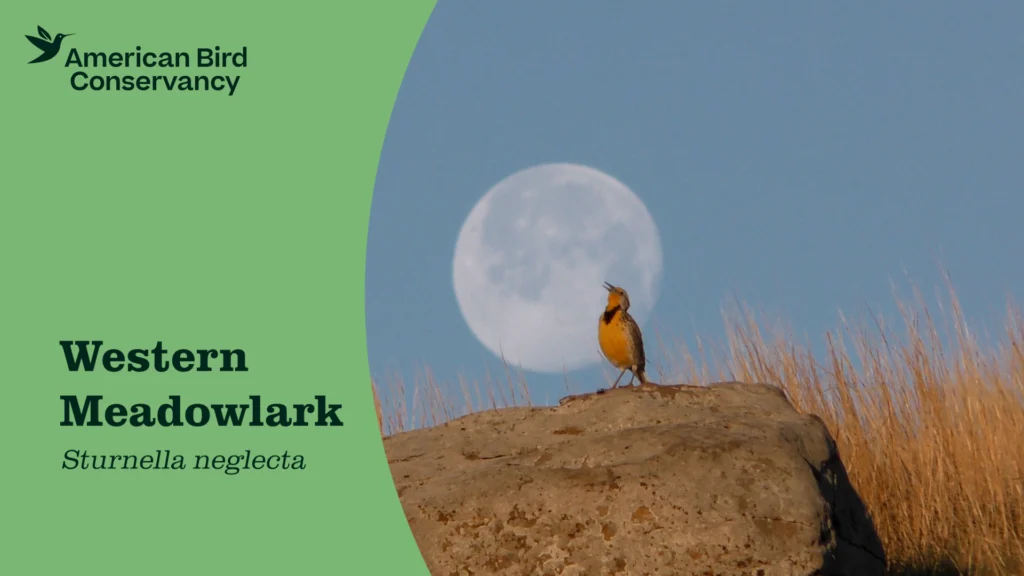
Bird Sounds
The Western Meadowlark sings a rich, gurgling song that is more complex than the shorter, whistled series given by the Eastern Meadowlark. Its most commonly heard call is a low, bell-like chupp, heard during courtship and territorial displays.
Matt Wistrand, XC638594. Accessible at www.xeno-canto.org/638594.
Thomas G. Graves, XC899432. Accessible at www.xeno-canto.org/899432.
Habitat
The Western Meadowlark is most common in native grasslands and agricultural lands converted from crops to perennial grasses.
Inhabits grasslands such as prairies, pastures, and abandoned fields.
- Weedy borders of croplands and roadsides.
- Irrigated farmland.
- May be found in deserts and arid lands during migration.
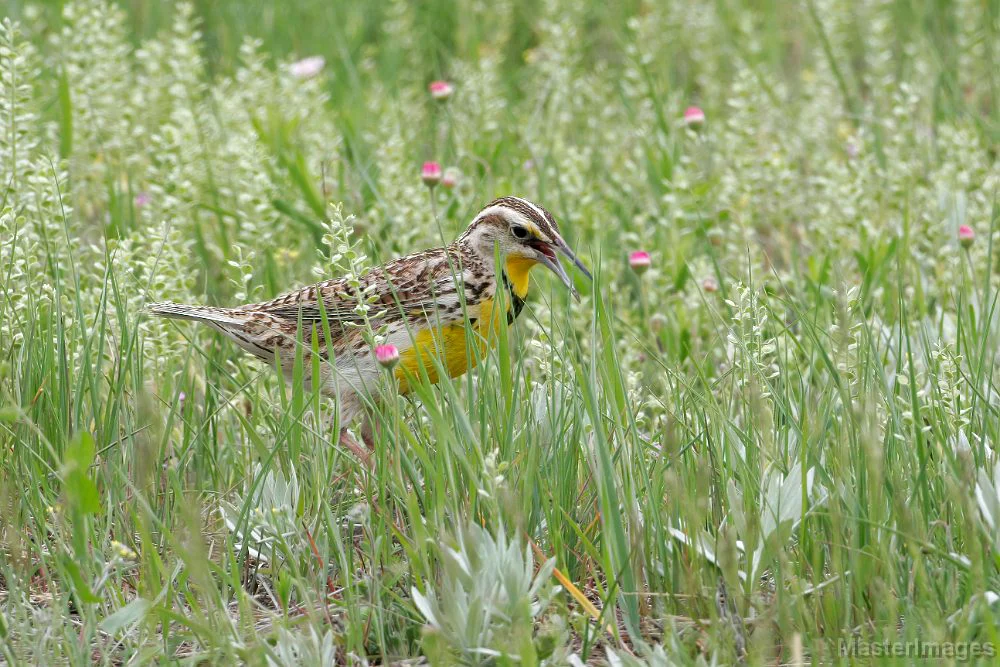
Range & Region

Specific Area
Mainly west of the Mississippi River – Canada, Minnesota, Wisconsin, Michigan, Kansas, Missouri, Illinois, Indiana, Ohio, western New York, California, Arizona, Texas, and Mexico
Range Detail
The Western Meadowlark’s range broadly overlaps that of the Eastern Meadowlark in the central United States, although the two species rarely hybridize. In some parts of the Southwest, the Western Meadowlark’s range overlaps with the recently named Chihuahuan Meadowlark, which had formerly been considered an isolated Eastern Meadowlark population.
Did you know?
Western Meadowlark populations are resident in the western and south-central parts of their range, while northern U.S. and Canadian populations migrate as far south as the dry grasslands of northern Mexico in the nonbreeding season, where they join other birds such as the Thick-billed Longspur, Horned Lark, and Long-billed Curlew. It migrates in the daytime, travelling in small flocks.
Life History
The Western Meadowlark’s sweet, gurgling song is often the first sign of its presence. This bird often sings from under cover, but can sometimes be spotted in the open atop a fence post or roadside wire, where it can be easily identified by its bright yellow breast with a black, V-shaped band. If spooked, it flies low over the grasses in a distinctive series of quick flaps alternating with short, stiff glides.
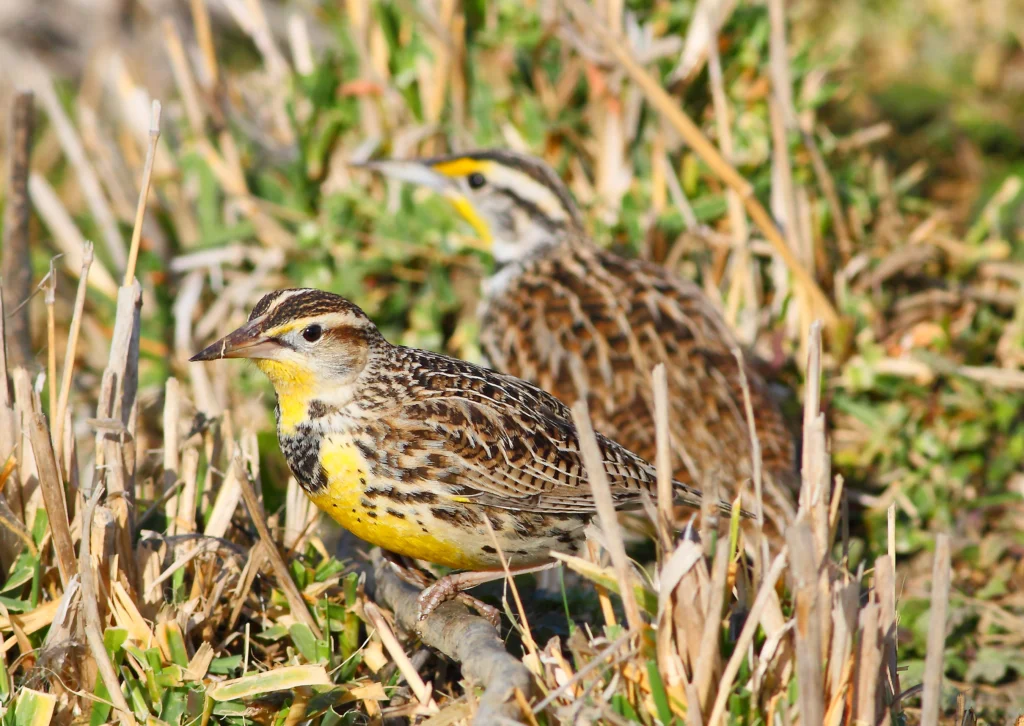
Diet
The Western Meadowlark’s diet varies with the seasons, consisting mostly of grains in winter and early spring; insects, including beetles, grasshoppers, crickets, worms, and moths, throughout the breeding season; and weed seeds in the fall.
Like its eastern counterpart, this species forages for its food on the ground, using its long, strong beak to reach into grass tussocks and to probe underground for insects and seeds. While probing, the meadowlark inserts its closed bill into the ground or a grass clump, then pries open its mandibles to access its food. This behavior, known as gaping, is seen in other members of the blackbird family (Icteridae), including the Common Grackle. European Starlings also gape when feeding on the ground, especially on lawns.
Courtship
Like many grassland birds such as the Bobolink, the Western Meadowlark is polygynous, which means that a single male will have two or three mates at the same time. The male defends a territory, while the female does all the work of nesting and raising young.
Female Western Meadowlarks arrive on the breeding grounds after the males. A newly arrived female meadowlark will select a territory, then begin a series of aerial chases with the resident male to establish and cement a pair bond.
Nesting
The nest of a Western Meadowlark is a well-camouflaged domed structure of grasses, woven into surrounding vegetation on the ground. Some females even add a grass-covered ramp or tunnel leading to their nests that can be up to several feet long. If disturbed, the female will run some distance away from her nest before flushing, in an effort to conceal the nest’s location.
Eggs & Young
The female meadowlark incubates her clutch of five to six eggs for roughly two weeks. She feeds the young after they hatch, sometimes with contributions of food from her mate. The young meadowlarks leave the nest in 10 to 12 days; they are still unable to fly but can run quickly on their strong legs. They are capable of sustained flight in another week or two. The Western Meadowlark typically raises two broods a year. Brown-headed Cowbirds often parasitize Western Meadowlark nests and the nests of other species. (This reproductive strategy was advantageous when the species needed to follow bison and cattle on the Great Plains for food, but human alteration of the landscape has expanded the cowbird’s range and its impact on other species.)

